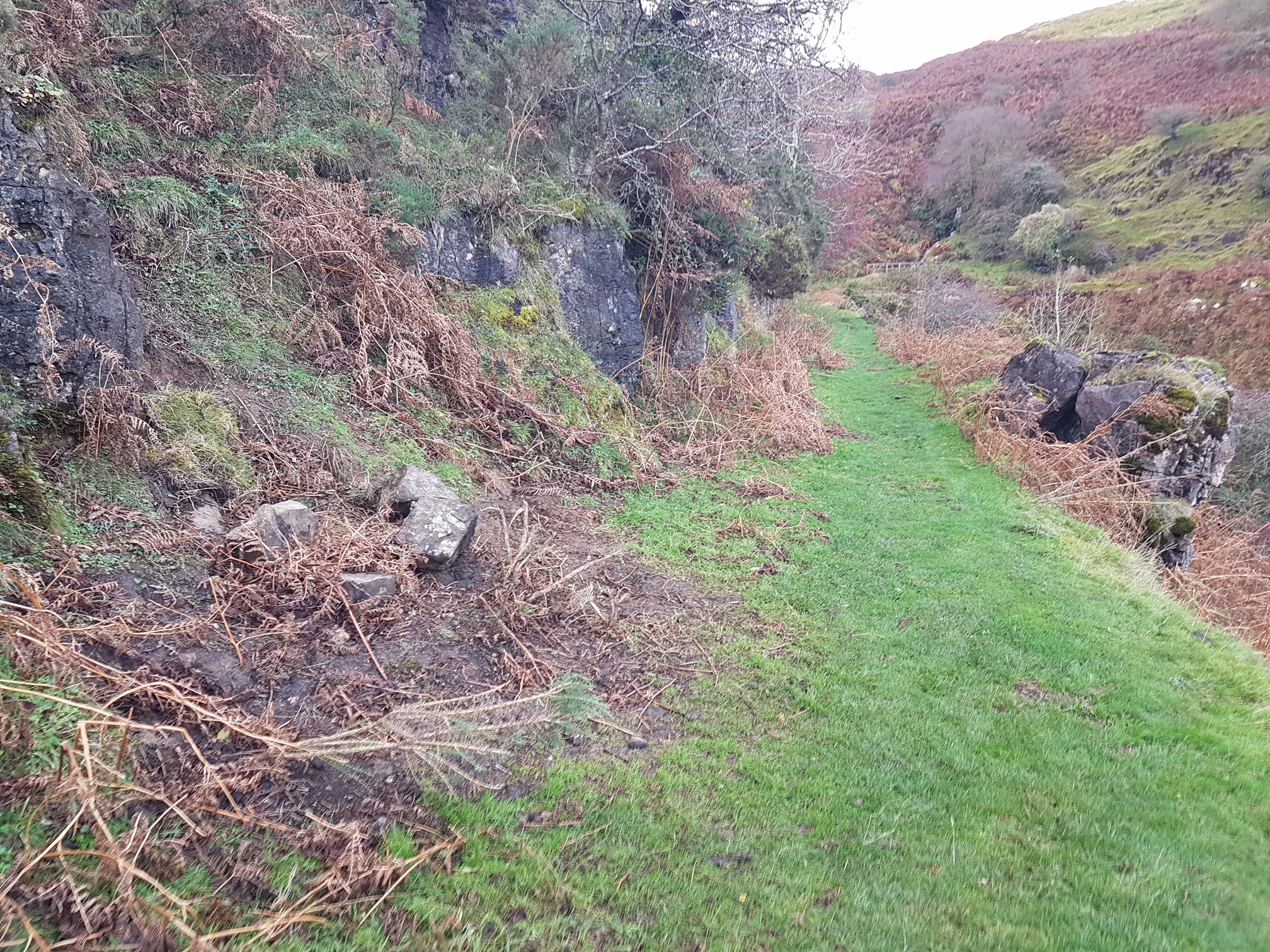
Following recent reports of the opening of a new entrance to Ogof Draenen and the statement from the Trustees of the Pwll Dhu Cave Management Committee, additional information has been received from Cadw who have confirmed that the hole that was excavated to open a new entrance to Ogof Draenen has been dug through, and therefore caused damage to, a nationally protected Scheduled Monument (MM189 – Garnddyrys (site of) and adjacent tramway).
The forge and tramway is a nationally protected monument, protected under the Ancient Monuments and Archaeological Areas Act, 1979, as amended by the Historic Environment (Wales) Act, 2016. It is an offence under the legislation to cause damage or disturbance to a Scheduled Monument without Scheduled Monument Consent from Cadw. No consent was sought, or granted, for the hole to be opened. Full details of the extent of the scheduled area can be found on Cadw’s online mapping portal, Cof Cymru or on the Welsh Government’s Lle portal.
The scheduling of the tramway covers much of the route from Pwll Du Quarry (also a scheduled monument) to the forge at Garnddyrys, and includes the tramway surface, the retaining wall on the outer edge of the tramway and the rock wall, created through terracing, on the inner side of the tramway. The newly excavated hole has disturbed archaeological deposits, with the spoil spread around the hole comprising a mix of soil and the clinker/stone/coal hardcore that would have been used in the construction of the tramway.
The scheduled monument lies within the Blaenavon Industrial Landscape World Heritage Site, and is one of the key early 19th century industrial features on the northern side of the Blorenge. It was built around 1815-1817 to transport pig iron from the furnaces at Blaenavon to the forge at Garnddyrys and then on to the canal at Llanfoist. The section of tramway included within the scheduling is of particular significance due to the high level of preservation (many sleeper stones remain in situ) and because it represents an exceptional feat of engineering – it was terraced into the steep hillside and then a substantial retaining wall was built to contain the tramway surface.
The tramway itself was then built up using clinker, crushed rock and coal waste that probably derived from the ironworks in Blaenavon. Limestone sleeper stones were embedded into the hardcore surface, and then iron rails set onto these. All of this was achieved entirely by hand, which is quite astonishing given the topography of that hillside! Unfortunately, the location of the tramway, together with its exposure to the elements and its age, means that it is vulnerable and there have been a number of collapses of the retaining wall over the last few decades which have had a detrimental impact on the stability of the structure. Any disturbance to the structure of the monument will further destabilise it and could, potentially, lead to the loss of sections of it.
In view of the importance of the site, Cadw’s priority is that the hole is securely sealed and stabilised as soon as possible to ensure that no further damage occurs to the fragile tramway remains. If the hole continues to be used as an entrance into the caving system it is likely that more damage will be done to the protected monument through erosion to the tramway surface around the hole, and potentially further digging.
A statement from the Cambrian Caving Council also posted on the British Caving Association website calls on cavers not to use this entrance and further asks cavers to refrain from “making any remarks in any place which might encourage anyone to use or seek out this cave entrance.” They go on to say: “Important lessons need to be learned in the light of these developments” and that they “look forward to working constructively and collectively with Cadw, and with all the other interested parties, to resolve this and have a positive future relationship.”
